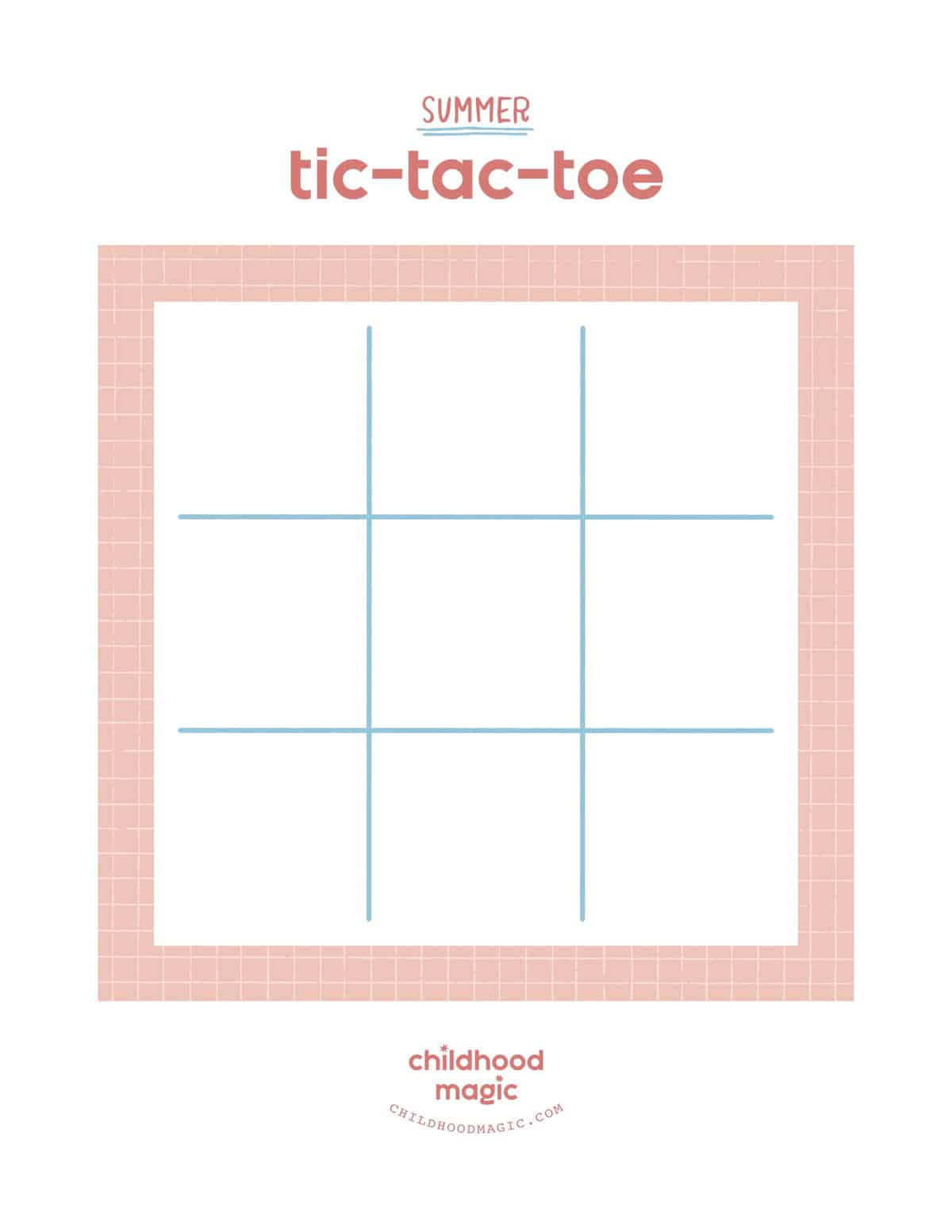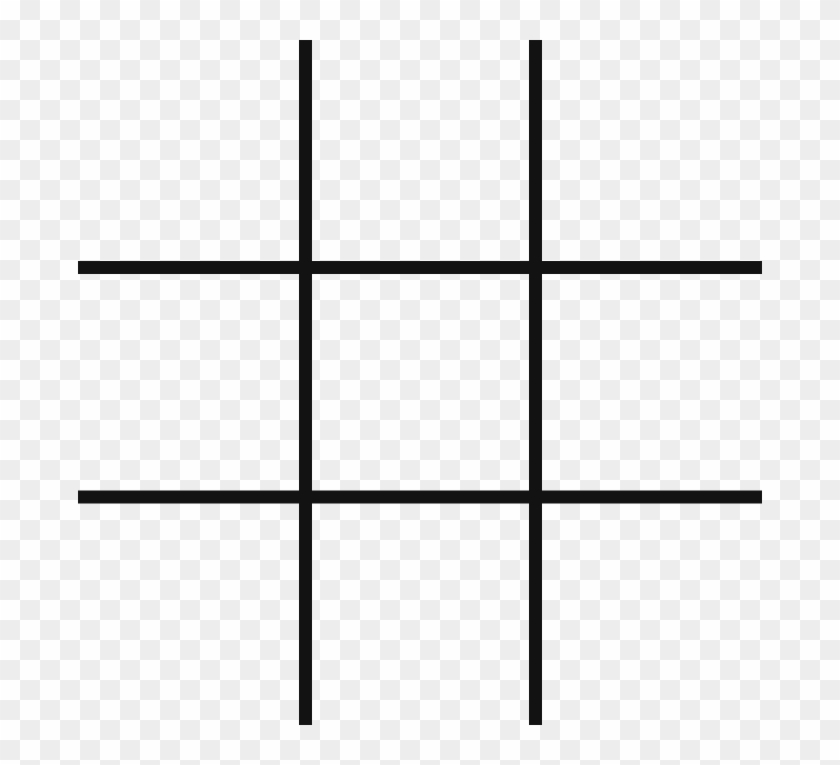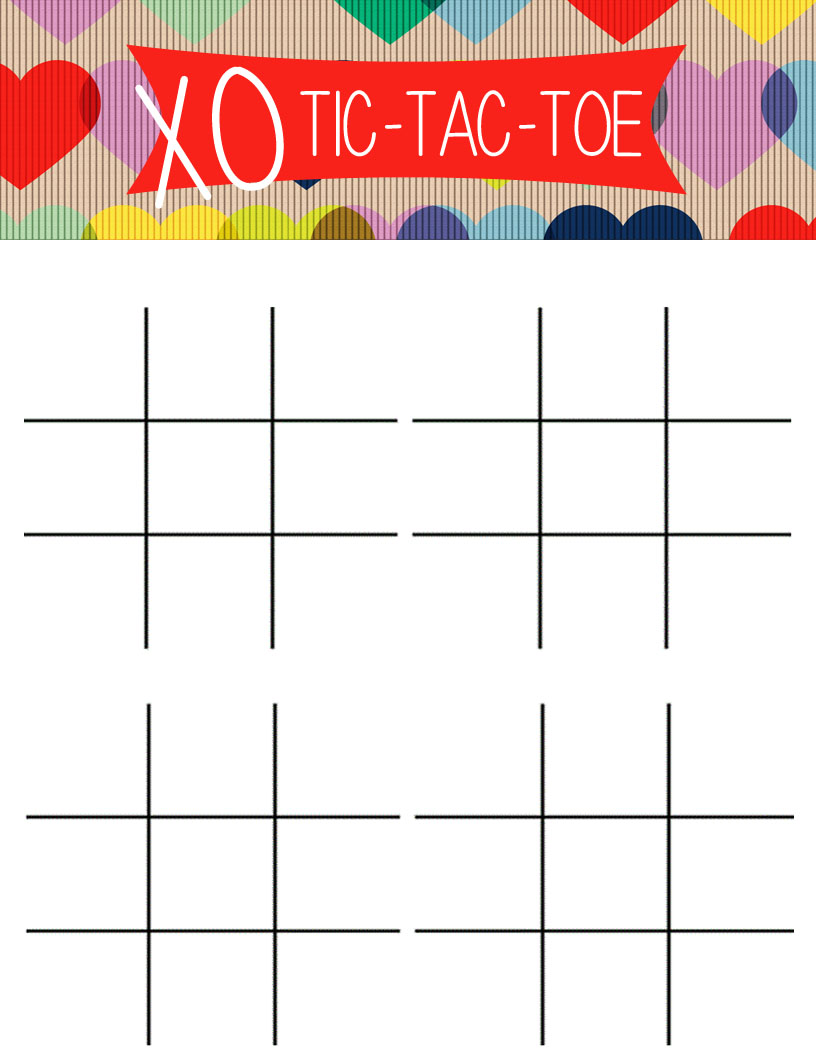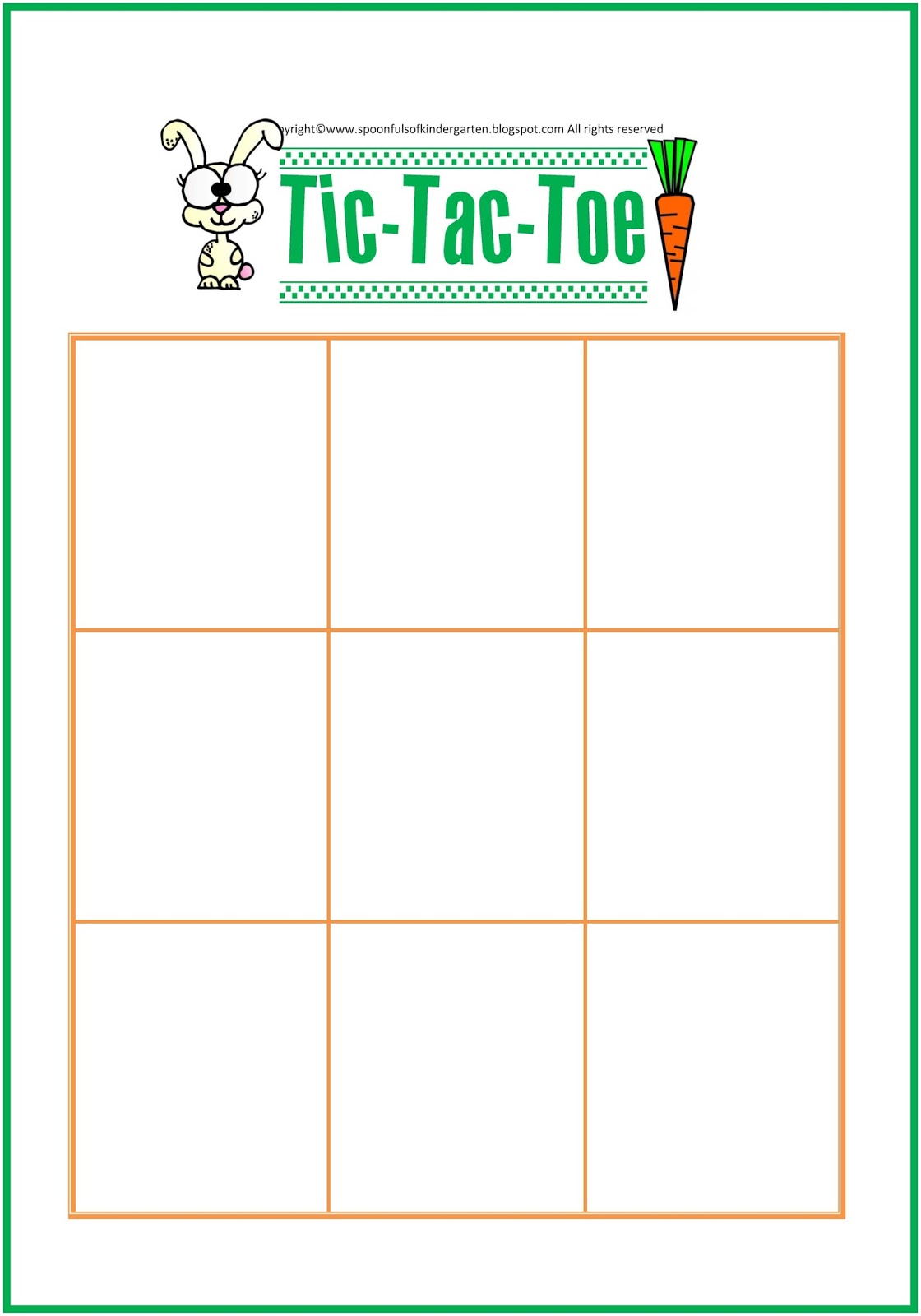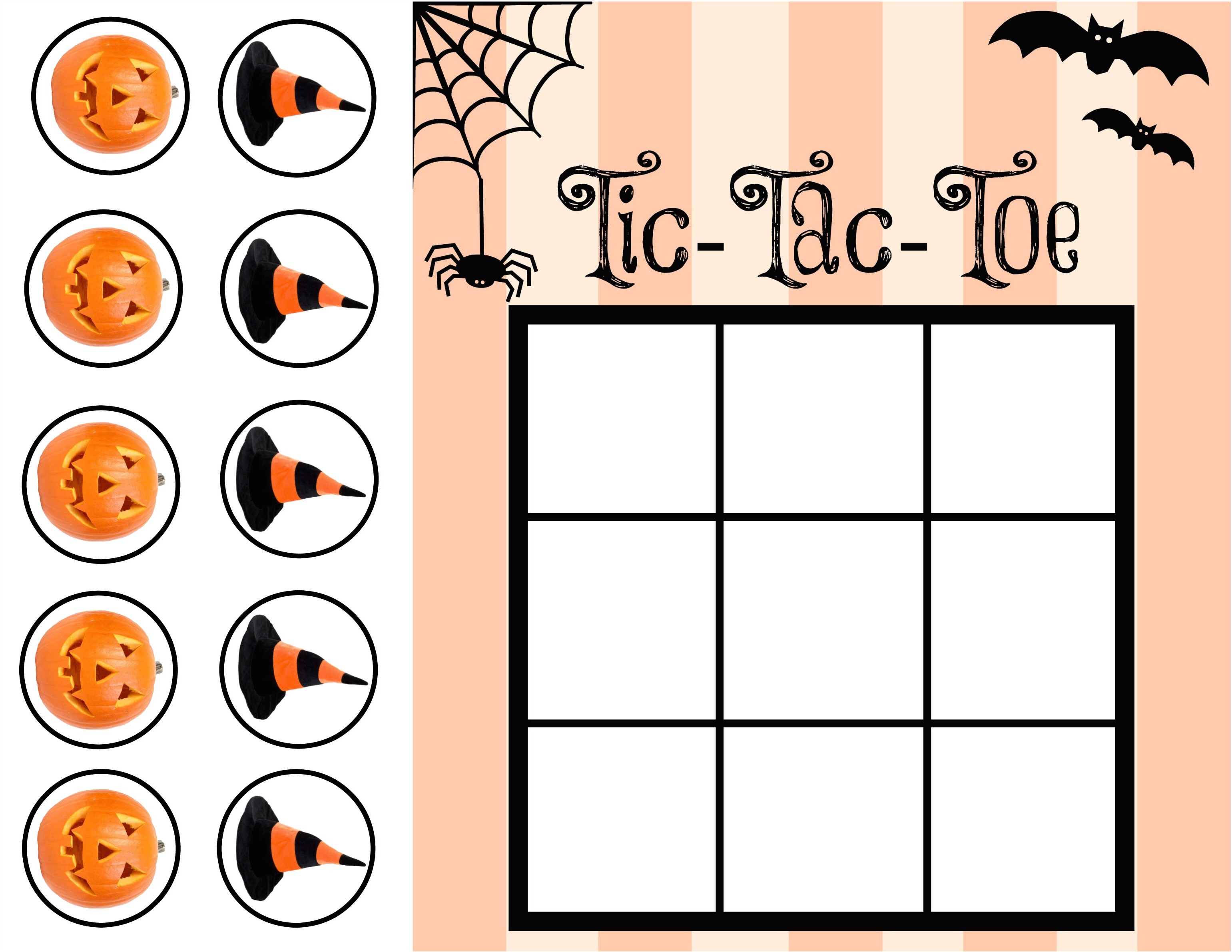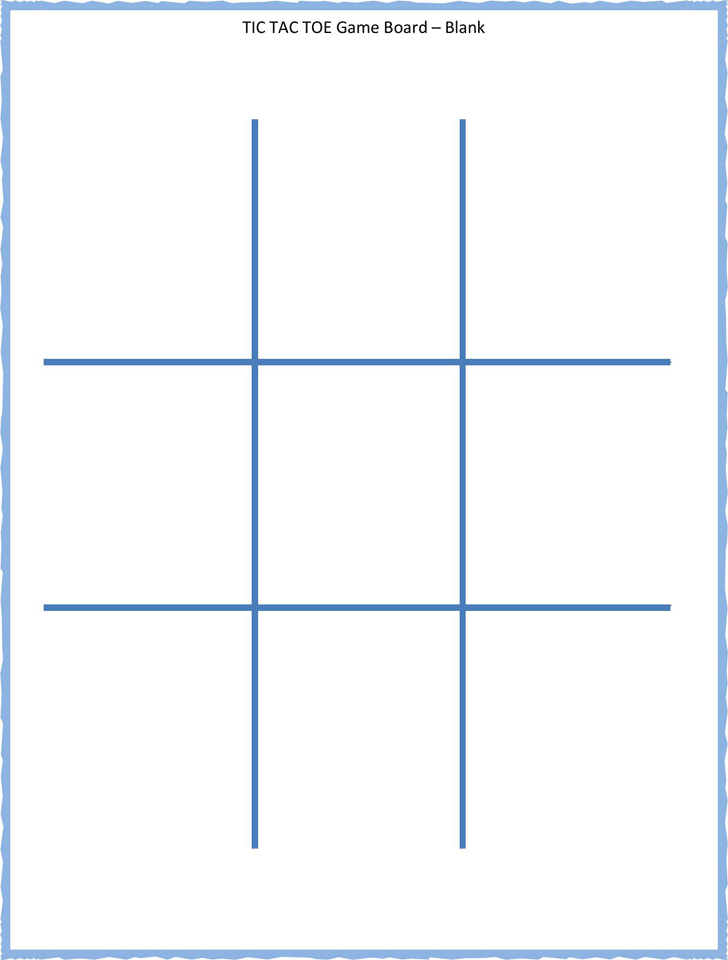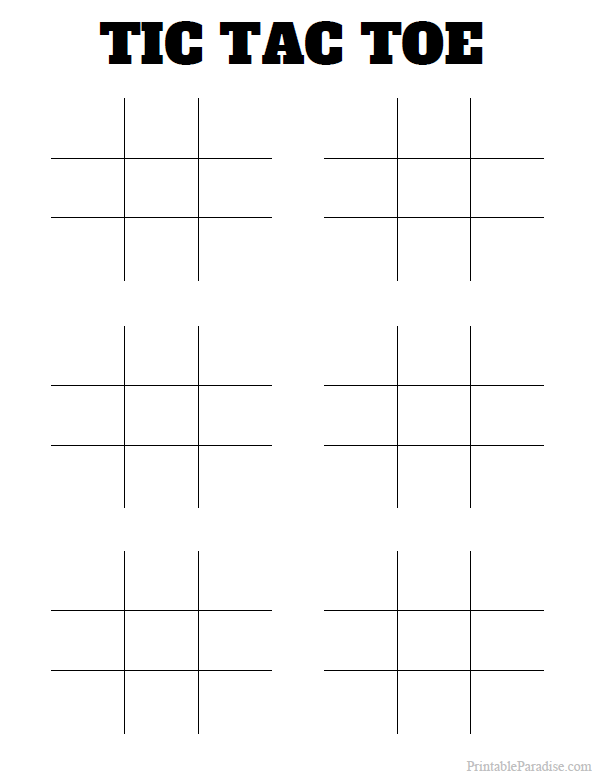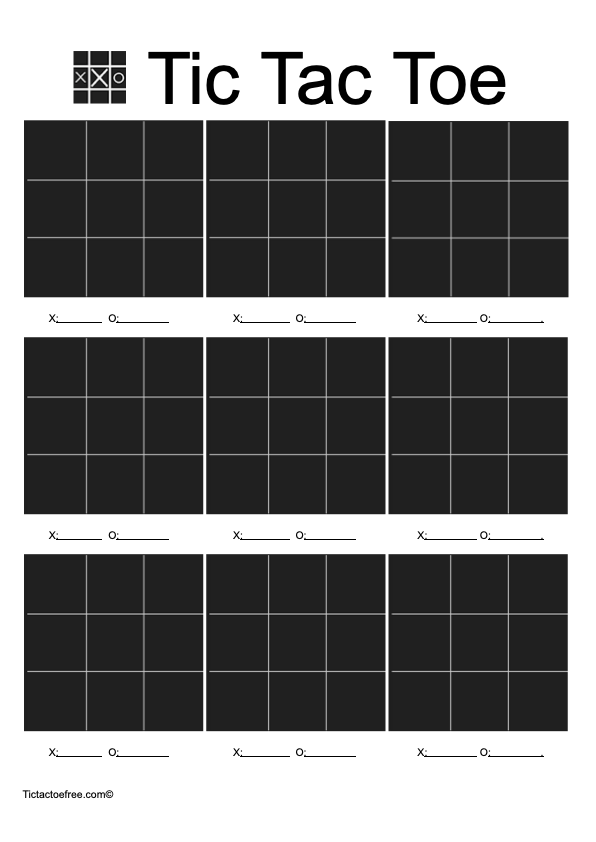Printable Tic Tac Toe Boards
Printable Tic Tac Toe Boards - If the user do any mistakes then the ai win the game. Again here goal is not always same. But they all fail for some reason. My minimax for tic tac toe implementation generates a tree of 5477 nodes. I'm trying to build a tic tac toe game to demonstrate and experiment with machine learning algorithms, and i've found an interesting problem. Temp_boards.append(c % 3) c = c // 3 boards.append(temp_boards) That is my try to solve the question, but it is the wrong way. Here is my code to generate each board where each element of the board array is a single board : But i also saw those games where they implemented a very smart ai where the computer always try to win. For row in [board[i*3:(i+1)*3] for i in range(3)]: Each node contains a tic tac toe board state and satisfies the following conditions: My code is at the bottom. But they all fail for some reason. I'm trying to build a tic tac toe game to demonstrate and experiment with machine learning algorithms, and i've found an interesting problem. This is the wrong solution Here is my code to generate each board where each element of the board array is a single board : We have an array of 9 that holds the current board position. In tic tac toe there are 3^9 (19683) board positions. I've been trying to figure it out, but i still can't find the problem going on with it. For row in [board[i*3:(i+1)*3] for i in range(3)]: Temp_boards.append(c % 3) c = c // 3 boards.append(temp_boards) I have played so many tic tac game which are available in the market. For row in [board[i*3:(i+1)*3] for i in range(3)]: My minimax for tic tac toe implementation generates a tree of 5477 nodes. Empty cells are designated with 0. A tic tac toe board can be mirrored, but for a machine learning purposes both these states are equivilent. I've been trying to figure it out, but i still can't find the problem going on with it. For row in [board[i*3:(i+1)*3] for i in range(3)]: Some used random moves and then try to block the user to win. I'm having. Boards = [] temp_boards = [] for i in range(0 , 19683) : For row in [board[i*3:(i+1)*3] for i in range(3)]: This is the wrong solution The board state is valid as per tic tac toe rule that players must take turns in placing. My minimax for tic tac toe implementation generates a tree of 5477 nodes. Print('| ' + ' | '.join(row) + ' |') print_board() Empty cells are designated with 0. I'm having a setback in the code for a tic tac toe java program. C = i temp_boards = [] for ii in range(0 , 9) : I'm trying to calculate all the sequences for a tic tac toe game. I've been trying to figure it out, but i still can't find the problem going on with it. C = i temp_boards = [] for ii in range(0 , 9) : Print('| ' + ' | '.join(row) + ' |') print_board() This is not so easy. I made about five different versions using recursion, iteration, both. Print('| ' + ' | '.join(row) + ' |') print_board() That is my try to solve the question, but it is the wrong way. Boards = [] temp_boards = [] for i in range(0 , 19683) : However, in this game players can choose to place either x or o on each move what are all the possible states after. If the user do any mistakes then the ai win the game. But i also saw those games where they implemented a very smart ai where the computer always try to win. I made about five different versions using recursion, iteration, both. I'm trying to calculate all the sequences for a tic tac toe game. I'm trying to build a. I've been trying to figure it out, but i still can't find the problem going on with it. And then adding them to a html template. This would be more work than paxdiablo's answer, but for a more complex game than tic tac toe might turn out to be easier. However, in this game players can choose to place either. Each node contains a tic tac toe board state and satisfies the following conditions: And then adding them to a html template. If the user do any mistakes then the ai win the game. Again here goal is not always same. I'm trying to calculate all the sequences for a tic tac toe game. That is my try to solve the question, but it is the wrong way. Print('| ' + ' | '.join(row) + ' |') print_board() Here is my code to generate each board where each element of the board array is a single board : This is the wrong solution Temp_boards.append(c % 3) c = c // 3 boards.append(temp_boards) Board = [' ' for _ in range(9)] def print_board(): Here is my code to generate each board where each element of the board array is a single board : The board state is valid as per tic tac toe rule that players must take turns in placing. In tic tac toe there are 3^9 (19683) board positions. This is not so easy. Every time i run it, the game board prints 3 times and o the second time, the x's all fill in a line saying that player x wins. Boards = [] temp_boards = [] for i in range(0 , 19683) : We have an array of 9 that holds the current board position. This is the wrong solution Again here goal is not always same. My minimax for tic tac toe implementation generates a tree of 5477 nodes. C = i temp_boards = [] for ii in range(0 , 9) : I have played so many tic tac game which are available in the market. I'm having a setback in the code for a tic tac toe java program. Temp_boards.append(c % 3) c = c // 3 boards.append(temp_boards) Some used random moves and then try to block the user to win.Summer TicTacToe Childhood Magic
Tic Tac Toe Printable Board Game Free Printable Papercraft Templates
Tic Tac Toe Board Printable
5 Best Images of Printable Tic Tac Toe Board Printable Tic Tac Toe
Free Printable Tic Tac Toe Game Sheets
Printable Tic Tac Toe Boards
Tic Tac Toe Board Printable For Words
Printable Tic Tac Toe Board
Printable Tic Tac Toe Boards
Printable Tic Tac Toe Sheets Download Free Boards to Play
And How Can I Generate All The Valid States Using Python?
For Row In [Board[I*3:(I+1)*3] For I In Range(3)]:
I'm Trying To Build A Tic Tac Toe Game To Demonstrate And Experiment With Machine Learning Algorithms, And I've Found An Interesting Problem.
My Code Is At The Bottom.
Related Post:
